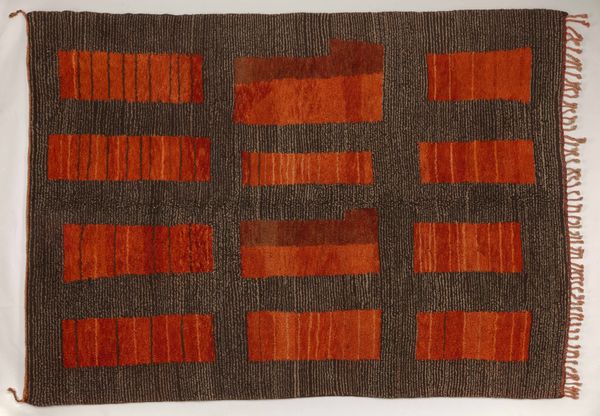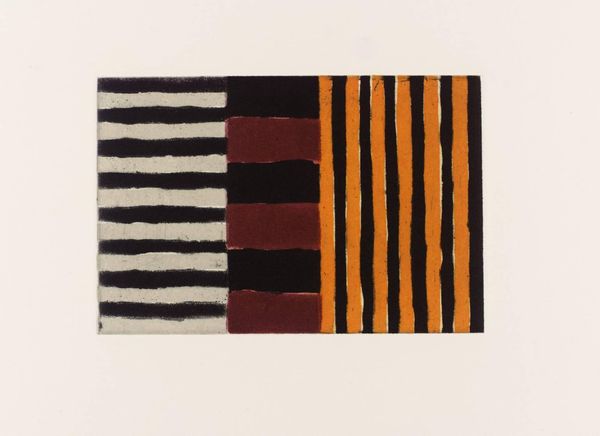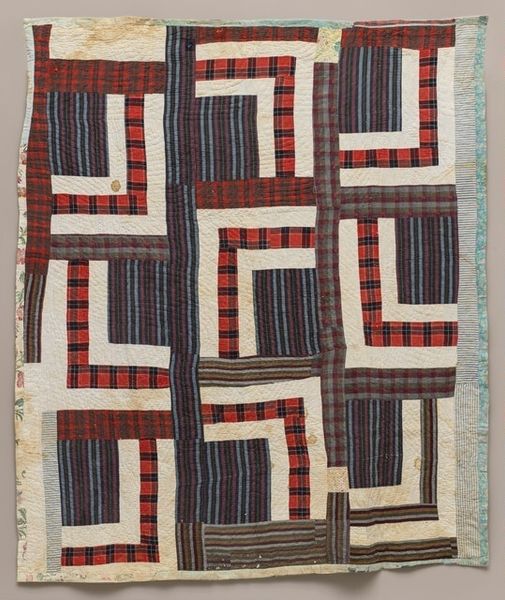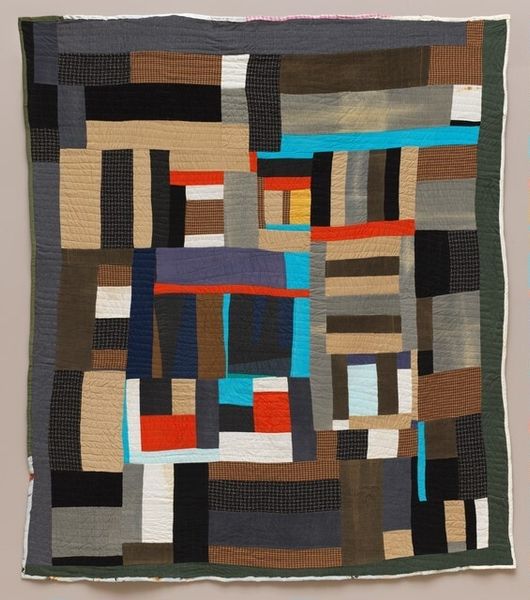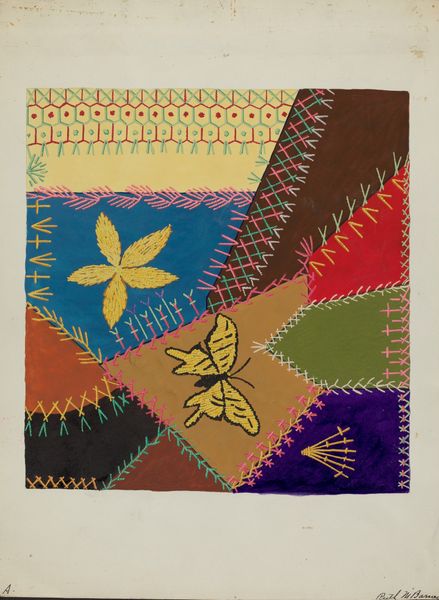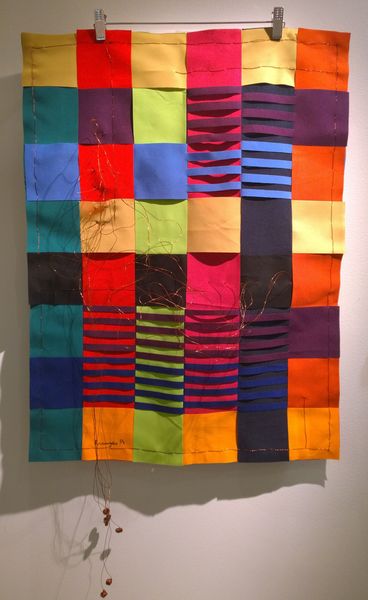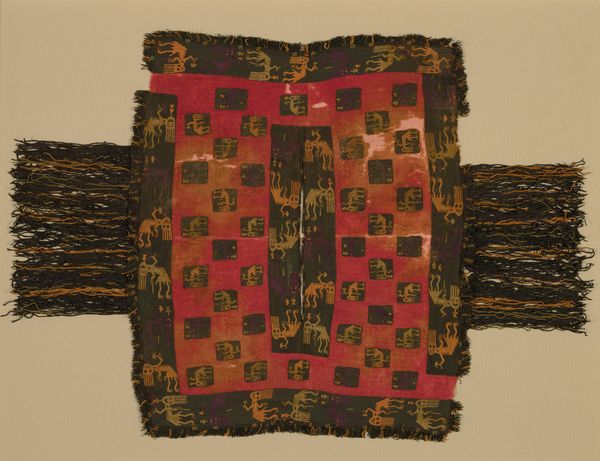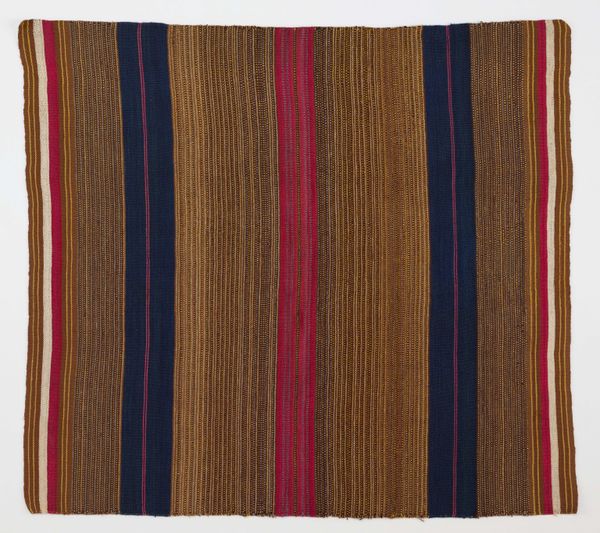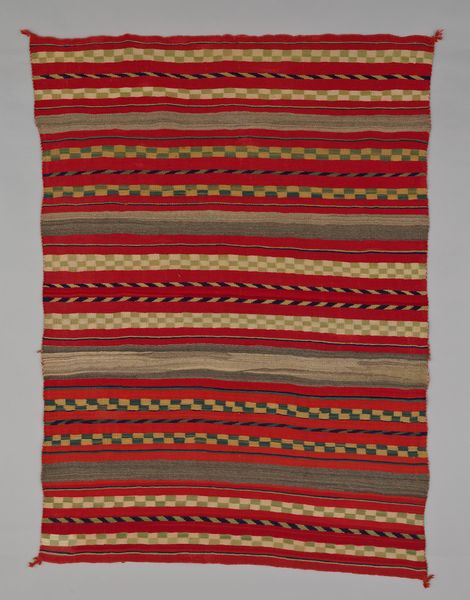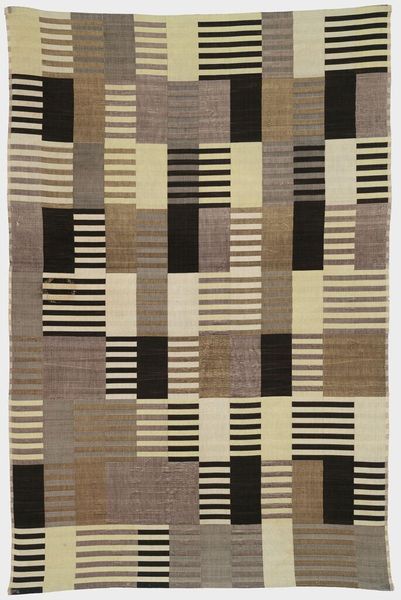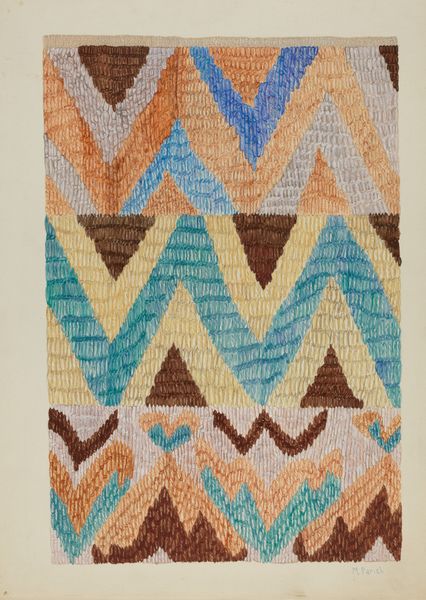
fibre-art, textile
#
fibre-art
#
contemporary
#
textile
#
geometric
#
geometric-abstraction
#
abstraction
#
line
#
decorative-art
Dimensions: overall: 203.2 × 198.12 cm (80 × 78 in.)
Copyright: National Gallery of Art: CC0 1.0
Curator: Welcome. We’re standing before “Lazy Gal” Variation, created in 2003 by Mary L. Bennett. It’s a compelling piece of fiber art. Editor: It’s warm, muted even. I sense the familiarity of woven textiles, of something lived with and handled frequently. The repetitive lines are somewhat hypnotic, giving it an abstract simplicity. Curator: The composition showcases Bennett’s strong grasp of geometric abstraction. Note the lines of alternating colors – mostly browns and yellows—arranged into what almost looks like a maze. Semiotically, this juxtaposition highlights how patterns can suggest hidden codes. Editor: Agreed. Thinking about the title though, doesn't it seem loaded? The 'Lazy Gal' descriptor pushes buttons. We have to look at how gender roles traditionally placed textile work in the realm of the domestic, where its labor went undervalued. Perhaps Bennett’s piece subtly critiques the stereotype, flipping the concept of "laziness" on its head by claiming it as a deliberate artistic choice. Curator: I see what you mean. But beyond that subtext, consider how the irregularities in the weaving – the slight warps, the occasional color variation—inject dynamism. These features prevent it from being simply a sterile grid, granting the object an inner tension. Editor: Absolutely, and situating it within the Pattern and Decoration movement enriches the conversation even further. That art movement elevated crafts like weaving into high art. Bennett, consciously or unconsciously, invites us to reflect on material culture and the unspoken narratives woven into everyday life. Curator: And there's something quietly beautiful about the texture. The way the fibers catch the light emphasizes dimensionality within an otherwise two-dimensional format. It's an engaging exercise in balancing color and form. Editor: So much here to unpack about craft and labor. Seeing “Lazy Gal” prompts thoughts about hierarchies and intersectionality, as Bennett questions tradition, subverts stereotypes, and finds artistry within the mundane. It challenges what it means to “create,” what “skill” looks like. Curator: Agreed. Bennett's command of textile art rewards close looking, making you reconsider assumptions about abstraction itself. Editor: An important reminder that artistic expressions can live, thrive, and challenge us in any medium.
Comments
No comments
Be the first to comment and join the conversation on the ultimate creative platform.
